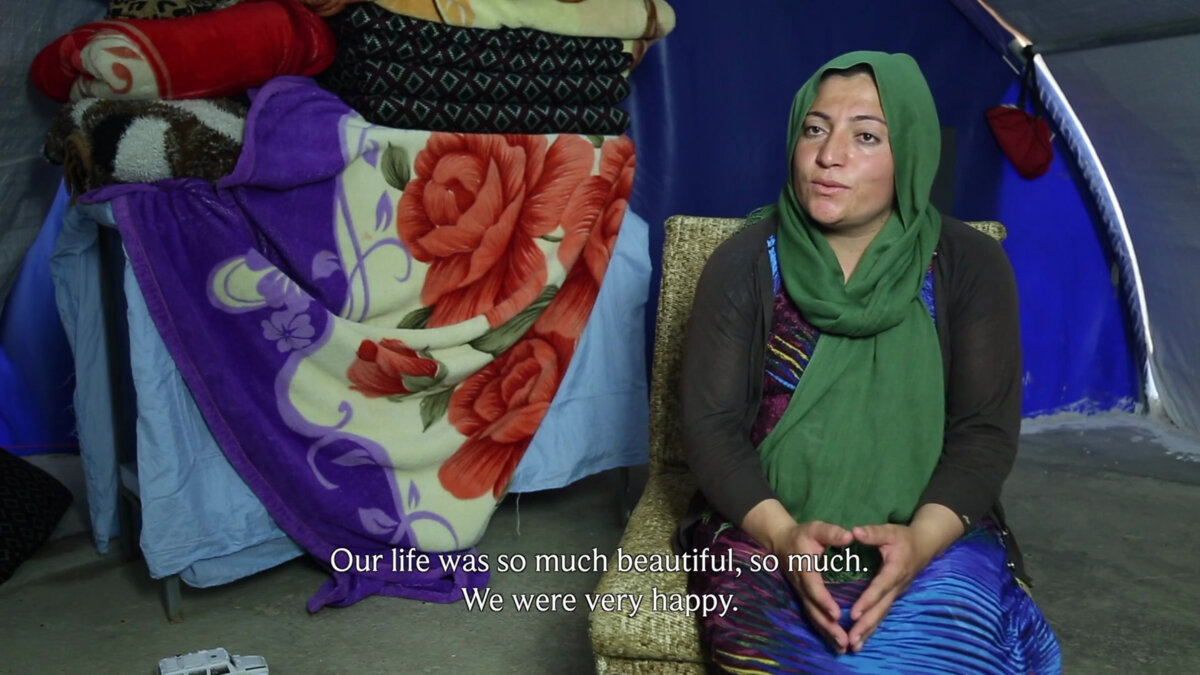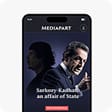
Agrandissement : Illustration 1

Hilde Teerlinck: You were born in Derik, Turkey, and now you’re liv- ing and working in the city of Diyarbakir. It’s also an area where ethnic groups of Kurdish origin are living, isn’t that right?
Erkan Özgen: Indeed, I was born in derik, Mardin, in southeast- ern Turkey. It’s very close to the Syrian border. Now, I’m living in eastern Turkey, in diyarbakir, a city of two million people. The east and the southeast of the country are predominantly Kurdish and this area has historically been a part of the Kurdistan region.
HT: Besides being an artist, you teach, you’re engaged in ecology, and you run a nonprofit art space?
EÖ: I’ve been teaching design and technology to twelve and thirteen-year-olds since 2000 and I’m an ecological activist and a member of the Mesopotamian Ecology Movement. It started off as a small group of local ecologists but has grown into an important association that tries to find solutions for the consequences of neo- liberal policies, war, and climate change.
last year, three artist friends and I opened an independent art space in diyarbakir. We called it “loading Independent Art Space.” That’s actually a term you use for when you upload documents, images, and films to the internet. We have a very active program, we organize workshops for young artists and invite artists, curators, and directors of museums to talk about art to—and with—those interested in art. We set up a library with books on contemporary art. We also have a small room for residencies, a workspace, and a kitchen. It’s a space to meet, talk, and exchange ideas about art.
HT: You studied art at university. Was video part of the program or was it more focused on traditional art?
EÖ: Yes, I graduated from the department of Art Education, Çukurova University in Adana, in 2000. In fine art education in Turkey, you’re just taught traditional painting. I used to paint, but in 2000 I stopped painting and started making videos. I learned that I preferred working with video quite early on.
It was really difficult finding a camera as a student in Adana in 1998 though. Today, everyone has a camera because they’ve got a mobile phone. They can shoot anything. Anyway, I did find a camera and I went to shoot my first video. We couldn’t edit back then. I had to transfer the videow from cassettes to Cds. It was a complicated process. I sent one off to an exhibition but I was told the work was too provocative. They were right, but them seeing my work was enough for me. Today I get to show my work around the world.
HT: And your first exhibition? Or the first video you ever showed?EÖ: The first video I showed was Art and the City at the diyarbakir State Fine Arts Gallery in 2001. Around the same time in America, the TV series Sex and the City had just come out. On the show, a group of women would meet and talk about sex. We, however, met in diyarbakir and spoke about art over coffee everyday. This was the first video I showed in Turkey.
HT: Maybe, in your case, video allows you to show a certain reality?EÖ: I enjoy making videos. Making videos is important to me. A video is like visual text. It’s a language that speaks directly to
the viewer. We’ve got a lot more material now. You can use practi- cally anything. There are myriad possibilities.
HT: We are currently working together on your solo exhibition for the Fundació Antoni Tapiès. If I’m not mistaken, this isn’t your first visit to Barcelona.
EÖ: Yes, I was in Mataró, Barcelona, on an exchange program for two months in 2009 and showed my work at an exhibition at la Capella.
HT: And you even had the opportunity to meet with Antoni Tapiès?EÖ: I was told, “Antoni Tàpies is here and he wants to meet you.” Apparently, he saw my work and said he was interested. Then
we met and had an interesting talk together.
HT: You met him several years ago, and now you’re having an exhi- bition at his foundation. What a coincidence. Over the last few days, we’ve been working together on the curatorial concept of the exhibition, including several recent and new video works of yours.
EÖ: It’s a real pleasure for me to have this opportunity to come back to Barcelona. I’m happy I’m here because it’s important for me to be able to show my work at the Fundació Antoni Tàpies. Antoni Tàpies is a very important artist and his foundation is known worldwide.
I’ll be showing four video works. The concept explores the main questions concerning war, violence, and trauma, which are themes that are present in most of my works.
HT: When we met in Palermo,1 you explained that you wanted to give a voice to those who didn’t have one in other parts of the world. In a way, your art is an instrument which you use to allow people to speak, breaking down the walls of silence. One of your most touching recent works is Wonderland. It not only provokes powerful emotions and
feelings, it also gives a voice, in a very direct way, to a certain reality.
EÖ: This is how I met Muhammed. I went to my mother’s town. My brother told me about fifteen refugees (seven of which were kids) who had fled the war. He had picked them up at the Turkish border and brought them to the city and gave them some bread. I bought some clothes and went to see them. Amongst the kids was Muhammed. He was mute and deaf. The next day he came to me and wanted to talk to me and tell me his story. I decided to make a video after this. His father agreed and said he wanted other people to know about the situation. I went to his house and shot the video. The video was forty minutes long and I spent a long time cutting and editing it. It’s a very strong story. Muhammed is from Kobani,2but now lives in a refugee camp. Many people have seen the video, and the reality of war. It’s not propaganda. It’s not TV. It’s not social media. It’s reality. He may not be able to speak, but his language is still very powerful.
Muhammad has seen a lot. One part of the world is suffering huge tragedies and the other part doesn’t see or say anything. War is the immigrant. War is death.
HT: That’s true. Erkan, I was thinking, for those who see your work, perhaps who fights against whom doesn’t really matter, because some- times the people who fight are also the victims. You said you wanted to show people reality. War is something quite abstract to many people, and many will never truly know what war is. But it is something horrible. The philosopher Arthur Schopenhauer once wrote, “Man is the only animal which causes pain to others with no other object than causing pain. [...] No animal ever torments another for the sake of tormenting: but man does so, and it is this which constitutes the diabolical nature which is far worse than the merely bestial.” 3 Is this something you evoke in your work?
EÖ: Yes, absolutely. I want to share experiences of the violence of war with everyone. I want people to know what war is.
That’s also why I made Purple Muslin.4 I filmed it at the Ashti camp in Sulaymaniyah5. Purple Muslin is a video about Yazidi refu- gee women in Iraq who suffered fourteen ISIS attacks in the Sinjar region. (About 1,500,000 Yazidi people live in this region.) They aren’t Muslim. They have a different religion—Yazidi. It’s different to religions like Islam or Christianity.
ISIS attack them because they want them to change their reli- gion. But they won’t. They don’t want to. This isn’t the first geno- cide that they’ve suffered and on August 3, 2014, they attacked them again. They cannot protect themselves because they don’t have guns. ISIS kidnapped many women, and many people died. It was, and is,
very horrible for them. I want to send a message to everyone about how the war has affected these women. I want people to hear their traumas. I want to show people reality, not fiction.
HT: It’s frightening to think, but we only really feel something when it’s close to us, you know? But today, in an artistic context, your work can be transformed into valuable documents that give us another vision that we need to be able to see reality. The directness and strength of the visual language allows the works about a concrete historical moment to live on. What is important is to transgress the mere representation of a story or a history. So, whether you’re Kurdish or Yazidi, it doesn’t really matter—it’s about what we’ve done to these people and how they’ve survived. The real force is the incredible capacity the work has to awaken and reveal a vision that can be shared.
EÖ: Yes, exactly. And talking about a global context, in the sum- mer of 2016, I was an artist-at-risk resident at Safe Haven Helsinki, Finland. I was in Suomenlinna.6 Suomenlinna has many cannons all over the island and a lot of tourists go to see them. It was strange to see them taking photos, because in my city, diyarbakir, there had been ongoing conflicts. Buildings were being destroyed and people were being killed with cannons. I spoke to some people taking the pictures and asked them if they knew that these cannons or tanks had killed people. They said that, for them, it was a part of history, that maybe they had once been used, but that they weren’t in use anymore. I said, ‘They still use them today. Perhaps not here, but in other parts of the world they do.’
I’m editing this video in the studio right now. I’ll be showing it at the exhibition. At the time, I thought to myself, UNESCO must protect these tanks because they use them. I want people to see what death and what war really is, and what impact war has on the personal and collective lives of many people.
I’m currently working on another project for the exhibition. It shows another angle of this specific reality of violence and war. I will shoot a video in Istanbul on gun use. Who uses guns and why? What is the aesthetic of a gun?
Today, in 2018, I want people to open their eyes.
HT: To reality, not fiction!



